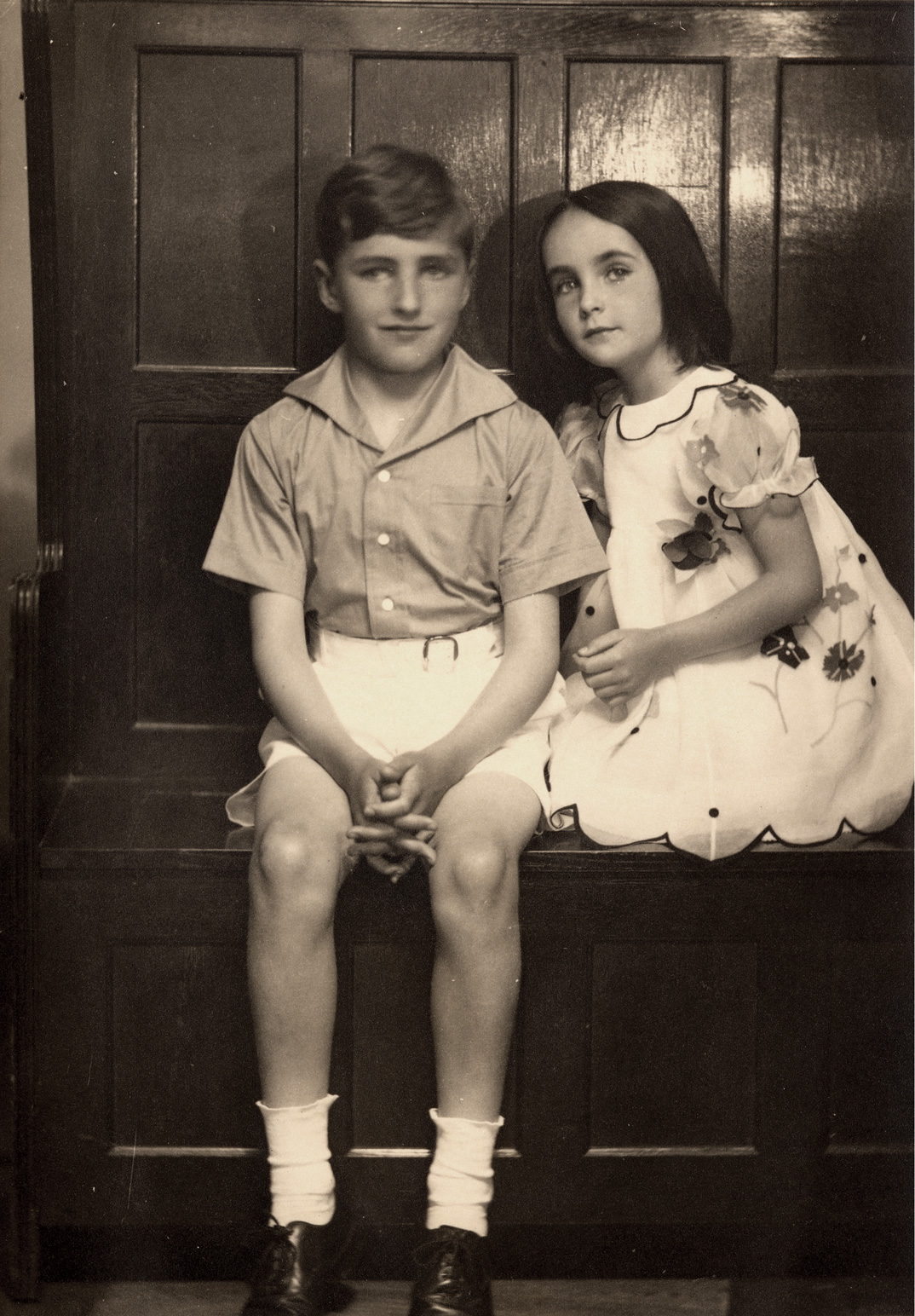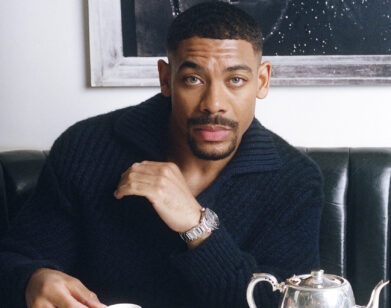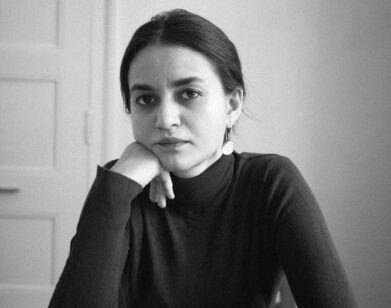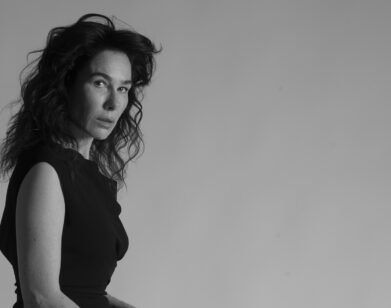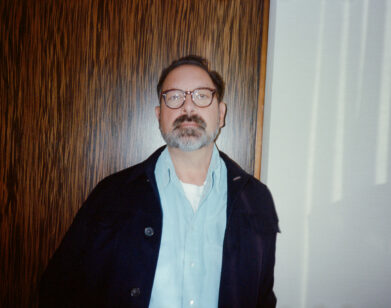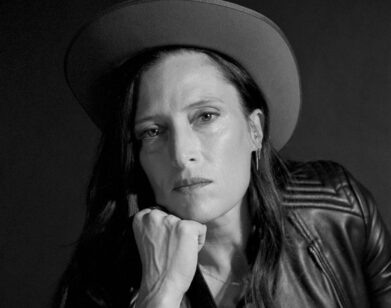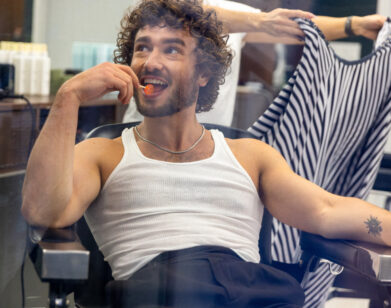Elizabeth Taylor: Remembering an Icon
Elizabeth Taylor was among the last of the great American golden-age film legends, and the news today of her passing has brought great sadness upon the entertainment industry. On the occasion of the February 2007 issue of Interview devoted entirely to Elizabeth Taylor, then-editor Ingrid Sischy executed an extensive interview with the actress and icon. The issue also included original artist commissions devoted to Taylor and interviews with people in her life and just a few of those who admired her, including Madonna, Tom Ford, Anne Hathaway, Todd Haynes, and many more.
As Sischy wrote in her letter from the editor for that issue, “Hers is a life that is as large as it gets-so full of inspiration, and romance, and heartbreak, and drama, and happiness, and pain, and triumphs, and disappointments, and beauty, and struggles, and achievements, and surprises, that it could fill many magazines and books.” It is with the greatest fondness and respect for Dame Elizabeth Taylor that we present the first of several excerpts from that issue. Stay tuned throughout the day for more.
INGRID SISCHY: Is this Dame Elizabeth?
ELIZABETH TAYLOR: Yes, it is.
IS: Hello, it’s Ingrid.
ET: Hi, Ingrid.
IS: I’m happy to hear your voice. I heard you went swimming with sharks.
ET: Yes! [laughs] I had such a great time. It really got me rolling out of my wheelchair and into the water. It was amazing.
Elizabeth Taylor: Remembering an Icon
Elizabeth Taylor was among the last of the great American golden-age film legends, and the news today of her passing has brought great sadness upon the entertainment industry. On the occasion of the February 2007 issue of Interview devoted entirely to Elizabeth Taylor, then-editor Ingrid Sischy executed an extensive interview with the actress and icon. The issue also included original artist commissions devoted to Taylor and interviews with people in her life and just a few of those who admired her, including Madonna, Tom Ford, Anne Hathaway, Todd Haynes, and many more.
As Sischy wrote in her letter from the editor for that issue, “Hers is a life that is as large as it gets—so full of inspiration, and romance, and heartbreak, and drama, and happiness, and pain, and triumphs, and disappointments, and beauty, and struggles, and achievements, and surprises, that it could fill many magazines and books.” It is with the greatest fondness and respect for Dame Elizabeth Taylor that we present the first of several excerpts from that issue. Stay tuned throughout the day for more.
INGRID SISCHY: Is this Dame Elizabeth?
ELIZABETH TAYLOR: Yes, it is.
IS: Hello, it’s Ingrid.
ET: Hi, Ingrid.
IS: I’m happy to hear your voice. I heard you went swimming with sharks.
ET: Yes! [laughs] I had such a great time. It really got me rolling out of my wheelchair and into the water. It was amazing.
IS: Isn’t it a good feeling being in water?
ET: Yes. Because it takes away everything—all pain, all sense of heaviness. You don’t feel our bones grating against each other. You just feel like an angel, floating. To be in that cage and watch the sharks get closer and closer—it was such an amazing feeling of being at one with nature, I had no sense of fear of them and they had no sense of fear of me. I felt like I could put my hands out and touch them.
IS: Whoa.
ET: [laughs] I didn’t.
IS: I’m glad.
ET: It would have spoiled my rings. [laughs]
IS: Do you think that growing up with a dad who was an art dealer, and therefore being exposed to art and artists at such an early age, jump-started your appreciation for creativity and for all kinds of people?
ET: I think so. [The Welsh painter] Augustus John was a friend of my father’s. He would drop by the house all the time. I was an idiot. He wanted to do a portrait of me.
IS: Don’t tell me you said no.
ET: I said no. At the time I was just getting over pneumonia. I didn’t think.
IS: How old were you?
ET: It was before Cleopatra [1963], so I must have been 29.
IS: Thank god you let Andy Warhol paint your portrait.
ET: Well, he did it from a photo. I’ve never sat for a portrait.
IS: Are you kidding?
ET: No.
![]()
IS: With the thousands of photographs that have been taken of you, you’ve never sat for a portrait?
ET: Never. I think that’s why I shied away from Augustus John. I just didn’t want to sit for a portrait.
IS: Why do you think that is?
ET: Shyness.
IS: Whereas with the camera?
ET: It’s fleeting.
IS: In the beginning, when the studios wanted you to do photo shoots what was that like? Did you not like it?
ET: No, I felt it was vain. Having to smile when you don’t feel like it. Turn to your left, turn to your right. Smile when you feel like snarling. There’s something meretricious and superficial about having to look into the camera knowing you should look your best, knowing you should try to look pretty. It’s all about self and I hate that, unless it’s with someone I love taking my picture, like Bruce Weber. He catches me on the fly.
IS: That parallels something we discovered when Bruce and I started working on this issue. While we were trying to figure out which pictures to use for it out of the thousands of images that have been done of you, often we felt ourselves attracted to the ones that were taking in real life, or by friends, or during the making of movies while you were working. There are major exceptions, of course, but by and large the more natural ones felt truer to you, somehow, than the ones where you had more formal sittings. There’s a feeling of aliveness and vividness in them. They feel more like your life.
IS: Isn’t it wild that your parents actually met in Arkansas City?
ET: Yes! [laughs] And then they moved to Illinois. They went to school together and he carried her books. And then he was adopted by my great-uncle, Howard Young, who was a very famous art dealer in New York. He tutored my father and my father opened a gallery on old Bond Street in London. My mother happened to be doing a play in the West End and Dad was like a backstage Johnny—he brought her flowers and they reminisced about when they were kids and started going out. My dad was so respected and respectable and square. He fell in love with her and they married in London, had two children and lived there 18 years, until the war. We had and idyllic life there—a house in the country, I had a pony, I went to the same ballet school where the little princesses went—and it was all just perfect. And then Hitler started dropping those damn bombs and all of a sudden things were different. And [Prime Minister Neville] Chamberlain spoke to my father. He knew all of the elite people in the government, and Chamberlain said, “Francis, you’d better take your family back to America.” So we were sent packing, and when I arrived in Hollywood they called me the Little Refugee. When I did Lassie, Come Home [1943], I had a thick English accent, which they immediately made me lose.
IS: How do they make people lose accents?
ET: They give you lessons in “Americanese.”
IS: You must have loved that.
ET: Oh, yeah! [laughs] It was wild. Anyway, I had wanted to be a ballerina. I used to go to the ballet once a week with my mother and I thought it was the most beautiful thing in the world.
IS: The tutus?
ET: Yes. I loved the whole thing. I’d go home and practice the movements and do my own free-form ballet. Even as a baby I knew how to do it. Later I bought ballet slippers and taught myself to dance on toe. When I came to the United States, people thought I was nuts because everything was Frank Sinatra and jazz and whatever you call that dance where you sling people between your legs. Well I preferred ballet, so I was really square.
IS: [laughs] Was your mom square or was she a little more wild?
ET: She was very proper. She had gotten that from living in England. I don’t think she was always like that. But my dad was like a proper English gentleman.

